One of the most famous festivals in Spain is undoubtedly Semana Santa. Many hundreds of years have shaped various weird and wonderful traditions.
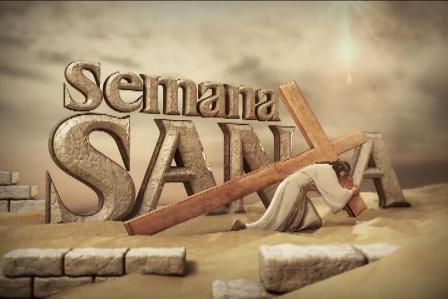
Even if you are not religious, it is difficult not to be moved, the atmosphere is always so vital and poignant.
For some it is a fun filled fiesta time, for others a week of ritual and reflection. Without a doubt, Holy Week is a tradition that is an integral part of the culture and appropriately reflects the spirit of the people.
Shall we ponder on a few??
Pardon Me?

Spain has a series of Easter pardons for prisoners, a practice that began in 1759, when convicts in Malaga rioted because an outbreak of the plague meant Holy Week processions faced cancellation. Prisoners forced their way out, carried Jesus’ image through the streets and then miraculously returned to their cells! King Charles III was so flabbergasted that from that day on he decided to free a few jail-birds every year after……..Fast forward more than 250 years and the tradition, with echoes of the liberation of Barabbas at the expense of Christ, the tradition remains in place, benefiting around 15 prisoners a year across Spain. All cases are subject to the same conditions as any other official pardon
Holy Thursday in León with The Burial of Genarín
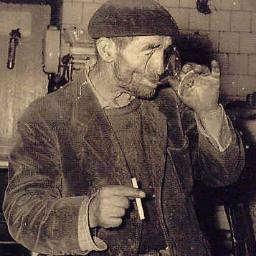
The Barrio Húmedo de León hosts on Holy Thursday night, one of a few pagan traditions of Spanish Holy Week. An entourage of up to 30,000 people embark on an enormous “pub-crawl” that pays homage to an illustrious local drunkard who died when he was run over by a one of the very first garbage trucks.
The esteemed Genaro Blanco, was a bon-vivant who loved his prostitutes almost as much as his liquor. After his death in 1929, his mourning drinking buddies decided to pay tribute to him on Maundy Thursday, the anniversary of his death, a tradition which has carried on, gaining in popularity ever since!
Mocking of the Nazarenes:
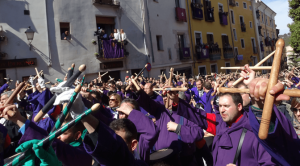
Las Turbas, as they are known, are meant to represent the Jews present during Christ’s death sentence and ensuing crucifixion. For twelve hours, they jostle and mock the Nazarenes, or penitents, and prevent them from carrying Jesus’s image through the streets of Cuenca.
The Mobs, depart at five thirty in the morning of Good Friday in the vicinity of the church of El Salvador. When the statue of “Jesus the Nazarene” comes out, thousands of men dressed in typical costumes of their brotherhoods stage the ridicule that Jesus suffered on the way to the crucifixion. The Nazarenes crash their sticks, drums and bugles in a multicolored spectacle of sounds and emotions that extends to the confinement of the church.
The Great Power
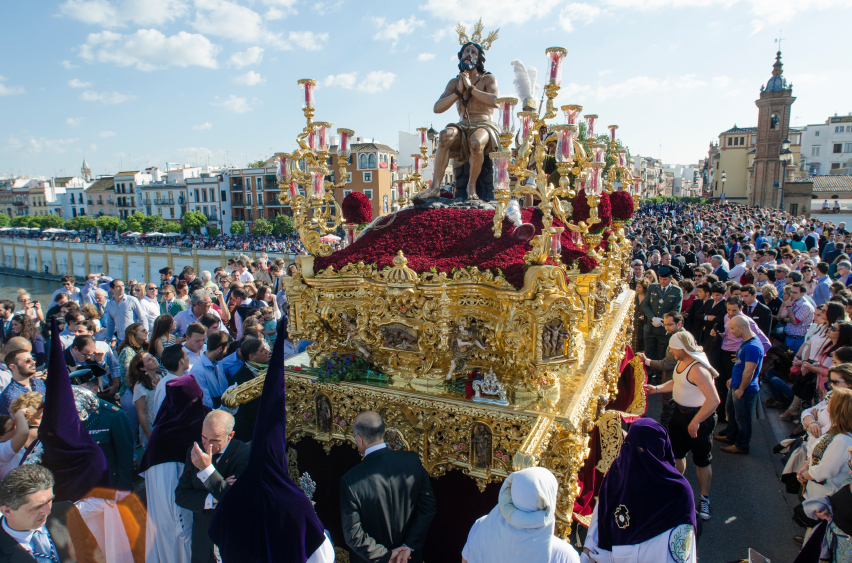
Is one of the most revered images in the Sevillian Holy Week, declared a Festival of International Tourist Interest. Christ leaves on the shoulders of the 35 costaleros who participate in the popular early morning of Good Friday, representing the execution of Christ at dawn in Jerusalem. The procession lasts about seven hours. This parade represents Jesus with the cross on his shoulder. The image is made of cedar wood, it is Baroque style and wears a purple tunic, adorned with gold and gems. The processions cost Seville over €50,000 each year. !!!
The Legend of Los Empalaos.
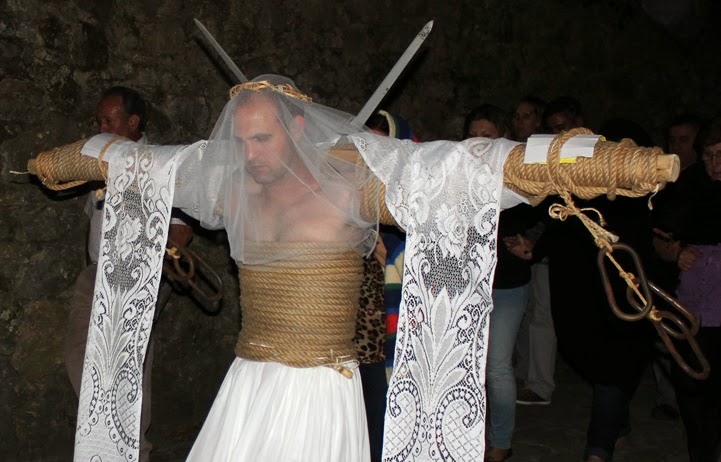
Legend has it that a servant from Valverde de la Vera fell in love with a woman, María. His love story was as if it were a dream, true. This country man decided to promise eternal love and how are promises made in Valverde de la Vera ? It is a sacred rite, which must never been disregarded, only death can prevent it.
Before the night of Holy Thursday , the couple decided to end their period of love and leave to follow their own paths. They did not talk to each other, they did not look at each other and the only glances that crossed those winding streets were of hate, of spite. They left their relationship, but when Holy Week arrived they had to finish with that promise, they were obliged to fulfill it.
They decided to leave things prepared in the home of a mutual friend they had. She brought the lanterns , the oil, the wick, a veil and a dark dress. That night he decided he would not wear shoes to walk barefoot. He had, however, brought with him, a rudder, a rope of esparto , some swords, the vilortas (or iron chains) whips, petticoats, veils and white rags.
On Holy Thursday, after finishing in the church office, he left for home. Anguish and high emotions filled him. It was to be a night of sacrifice, an overwhelming night. The young man was almost naked. he whipped his back with ropes full of knots and ground glass to provoke sores. The ritual begins ….. The blood and injuries were covered by a petticoat ans wrapped with an esparto rope, which also secured his arms around the rudder. This was the impaling. Before leaving the vilortas were placed at the ends of his arms and the swords on his back.. The white veil was then placed on his head.
The Via Crucis began in silence. He went ahead as Empalao and she, Maria, accompanied him on the road whilst holding the lantern.
At the end of the journey, he asks her why she has left him, and she replies: “At your hands I entrust my spirit!”. Inclining their heads, they embrace and kiss each other.
Like all love stories, they got married and lived happily ever after!
Danza de la Muerte de Verges (Dance of the Death of Verges):

In Verges, a town in Gerona, one of the most curious scenes of Holy Thursday takes place. After the dramatization of the life of Christ, the procession of the Passion begins, during which an entourage of 5 people dressed-up as skeletons perform a simple but impressive dance: each skeleton wears an object which represents the passing of time and death (a scythe, a clock without hands, a banner and two plates of ash). This entourage follows a procession of various hooded people who wear skull masks, carry torches and march to the rhythm of drum beats. This tradition dates back to the 14th century, when Verges suffered an outbreak of the Black Death which was interpreted as a divine punishment aimed at a village which had neglected its Christian obligations.
Hoods

The processions in which people walk the streets wearing high conical hats are world famous. These items of headwear are called “capirotes” (hoods) and originated during the time of the Inquisition when convicts were forced to wear similar hats. From the seventeenth century they started to wear them on their own accord. Its shape represents the approach of the penitent to Heaven.

And not an egg, bunny rabbit or hot cross bun features anywhere!! 😉 Front Cover at Etsy


